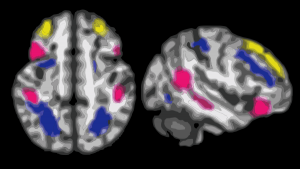So here we have a subject of great importance and reasoning. First quote from a google search says “Spatial reasoning is a category of reasoning skills that refers to the capacity to think about objects in three dimensions and to draw conclusions about those objects from limited information. Someone with good spatial abilities might also be good at thinking about how an object will look when rotated.”
I can attest first hand that some individuals are totally gifted in this area per the following:
I requested from a local lumber milling company 100 blocks of different species of wood, planed at 1/2 inch and cut in increments of one inch in all permutations and combinations. Such as 1×1, 1×2, 1×3, 1×4, 1×5, 2×2, 2×3 2×4 etc etc… The mill-man told me that something under 8 inches was possible with standard wood. I requested as many cool scraps with knots and stains and odd grains and mineral deposits as possible, just because those are visually interesting to me. When I picked up my order, I was thrilled, but also totally overcome in awe of whomever had packed that box of pieces. Well over 300, perfectly placed in a box, few spaces, all assembled just as one would assemble a jig-saw puzzle. I do not have any idea how in such a short time anyone could have created layer after layer of even fitting wood using random size pieces in such a short amount of time. Astounding spacial perception is all I could use to explain it.
Spatial reasoning is usually classified differently than other forms of reason: verbal, logical, and associative skills and working memory.
Spatial reasoning abilities allow individuals to see, remember, rotate, mirror, invert objects in their minds. While in times gone by, men were considered better at spacial awareness, this and other discrepancies between the genders has been challenged. Sadly, as with most literature, there is suggestion that age takes its toll on spatial (as well as other) reasoning abilities. But on the upbeat side of this, many views of the “non modifiable brain” have been disproved, and the mind and cognition are recognized as powerful, plastic (you know not in terms of PVC plastic, or polymer clay, ha ha) but malleable, which gives us hope and maybe impetus to improve our mental abilities.
It isn’t a matter now of “right brain” “left brain” but networks (sound familiar to you computer scientists). Networks that take care of “executive functions”, that take care of “creative and associative” problems, and what i read was called the “default mode network” (ha ha stay out of that one–involved in inhibitory control), and the “salience network” making decisions about whether to stop, redirect, emphasize or continue and partly in control of the default mode network… at least that is how i understand it.
So when I looked at the color MRI images of brains functioning in these different modes, it became clear that there were “hot” spots placed at several different sites in the hemispheres, distributed as it were, and while probably not redundant, certainly intertwined, interlinked, and interacting. Not just one hemisphere and one active spot, but many, linked.
The studies that show up on function of these networks seem largely to focus on tranmatic brain injury. I did find one study that showed (MRI) the distribution of some areas of activity for several networks.
I put together a composite color image (using photoshop and corelDraw) from several MRI images that I found online…. I think this is an awesome and fun graphic…. we are wired–right and left hemispheres. I guess, most importantly for society as a whole, the frontal lobe networking (the salience, the breaks, the control) (yellow) (my image modified from a Scientific American article, which by now is probably highly outdated… LOL)
